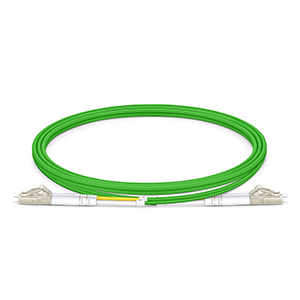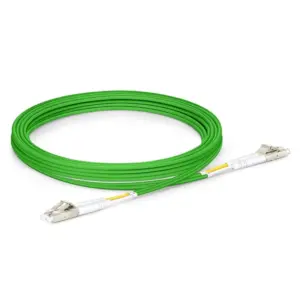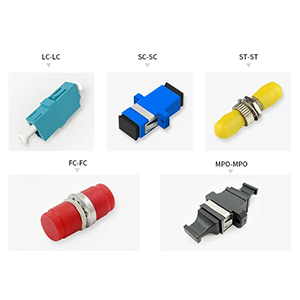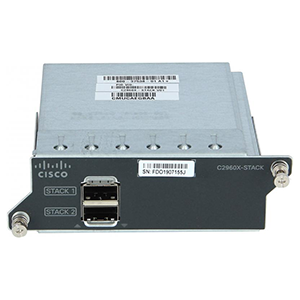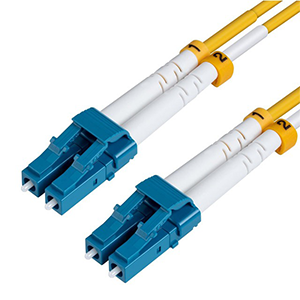In today’s article, I will discuss with you OM5 optical fiber as an important breakthrough for the next generation of multi-mode optical fiber. We will have an in-depth understanding of the characteristics and wide application fields of OM5 optical fiber. As an innovative optical fiber solution, OM5 optical fiber has obvious advantages in the field of data transmission. Let us learn more about OM5 optical fiber!
Basic knowledge of OM5 optical fiber
OM5 optical fiber is a multi-mode optical fiber with specific definitions, characteristics and transmission performance. The following is the basic knowledge about OM5 optical fiber:
-
Definition and characteristics:
OM5 fiber is a type of multimode fiber, also known as broadband multimode fiber or multimode enhanced fiber. Its definition and characteristics are mainly related to its wavelength division multiplexing (Wavelength Division Multiplexing, WDM for short) capability. OM5 optical fiber supports the transmission of optical signals of multiple wavelengths in the range of 850 nanometers to 953 nanometers, and is used for high-capacity transmission and multi-wavelength optical communications.
Differences from other multimode optical fibers:
- OM1 and OM2 optical fibers: OM1 and OM2 optical fibers are early multi-mode optical fibers, mainly used to transmit lower speed optical signals. They have shorter transmission distances and lower bandwidth.
- OM3 and OM4 optical fibers: OM3 and OM4 optical fibers are commonly used multi-mode optical fibers used to support high-speed optical communications, such as Gigabit Ethernet and Fiber Channel. They have high bandwidth at 850 nanometer wavelength and are suitable for medium-distance transmission.
- OM5 optical fiber: OM5 optical fiber supports the transmission of optical signals at multiple wavelengths in the range of 850 nanometers to 953 nanometers, with higher bandwidth and longer transmission distance. Compared with OM3 and OM4, OM5 fiber provides greater capacity and better performance to meet the needs of future high-speed optical communications.
Transmission performance and technical indicators:
- Bandwidth: The bandwidth of OM5 fiber at 850 nanometer wavelength is typically 10,000 gigabits per second·km (Gbps·km). This means that in OM5 optical fiber, high-speed data transmission can be supported, such as 40Gbps and 100Gbps Ethernet.
- Transmission distance: The transmission distance of OM5 optical fiber is related to the specific application and data rate. Normally, at high speeds, the transmission distance of OM5 fiber is farther than that of OM3 and OM4 fiber.
- Wavelength Division Multiplexing (WDM): OM5 fiber supports the transmission of multiple signals in the same fiber by using different wavelengths. This WDM capability enables OM5 fiber to achieve high-capacity data transmission in optical communication systems.
In short, OM5 optical fiber is a multi-mode optical fiber with high bandwidth, long transmission distance and wavelength division multiplexing capabilities. It has advantages in high-speed and high-capacity optical communication applications and is widely used to meet future data transmission needs.
Overview of the advantages of OM5 optical fiber
OM5 optical fiber has several advantages in data centers and enterprise networks. Its high bandwidth and low loss characteristics, as well as its advantages in long-distance transmission and high-density applications, are key points:
Benefits in data centers and enterprise networks:
- High-rate transmission: OM5 optical fiber supports high-rate data transmission, such as 40Gbps and 100Gbps Ethernet. This makes it ideal for meeting the growing bandwidth demands in data centers and enterprise networks.
- High-capacity connection: With the support of OM5 optical fiber, data centers and enterprise networks can achieve larger-capacity connections to meet the needs of large-scale data transmission and cloud computing applications.
- Flexibility and future expansion: The wavelength division multiplexing capability of OM5 fiber enables it to support optical signal transmission at multiple wavelengths, providing flexible scalability to adapt to future network growth and new application requirements.
High bandwidth and low loss features:
- High bandwidth: OM5 fiber has a high bandwidth at 850 nanometer wavelength, usually 10000 Gbps·km. This enables it to support high-speed data transmission and meet large-capacity communication needs.
- Low loss: OM5 optical fiber has low transmission loss and can transmit optical signals over longer distances without serious attenuation. This means longer transmission distances in data centers and enterprise networks while maintaining signal quality and reliability.
Advantages in long-distance transmission and high-density applications:
- Long-distance transmission: Because OM5 optical fiber has low transmission loss and excellent optical performance, it can support high-speed data transmission over long distances. This is very beneficial for connecting devices and network nodes on different floors, different buildings, or different geographical locations.
- High-density applications: OM5 fiber also performs well in high-density applications. Due to its high-bandwidth characteristics and multi-wavelength transmission capabilities, it can achieve more fiber connections and port densities, helping to optimize the layout and resource utilization of data centers and enterprise networks.
So OM5 optical fiber has the advantages of high bandwidth, low loss and flexibility in data centers and enterprise networks. It can support high-speed transmission and large-capacity connections, adapt to long-distance transmission and high-density application requirements, and provide reliable and efficient solutions for modern networks.
Application scenarios of OM5 optical fiber
OM5 optical fiber is widely used in different fields, especially in data centers, campus networks and smart buildings. The following are some practical application cases illustrating the use and importance of OM5 fiber:
Data Center:
- High-speed network connection: Data centers need to handle large amounts of data traffic. The high-bandwidth characteristics and low transmission loss of OM5 fiber make it an ideal choice for high-speed network connections. It can support 40Gbps, 100Gbps or even higher-speed Ethernet connections to meet the data center’s needs for fast and reliable data transmission.
- Wavelength division multiplexing: The wavelength division multiplexing capability of OM5 fiber provides data centers with larger capacity connections, supports the transmission of optical signals of multiple wavelengths in the same fiber, and achieves high-density data transmission and resource utilization.
Campus Network:
- High bandwidth requirements: School and university campus networks need to support a large number of users and devices, as well as high-speed data transmission. The high-bandwidth characteristics of OM5 optical fiber can meet the needs of multimedia teaching, online learning and large-scale data transmission in campus networks.
- Long-distance connections: Campus networks usually cover a wide area, including teaching buildings, laboratories, and student dormitories. The low transmission loss of OM5 optical fiber makes it possible to establish reliable network connections over long distances.
Smart buildings:
- High-density cabling: Smart buildings need to support a large number of smart devices and sensors, such as security monitoring, building automation and smart lighting systems. The high-density application advantage of OM5 optical fiber makes it possible to implement more optical fiber connections in a limited space to meet the complex network requirements in smart buildings.
- High-bandwidth transmission: Various applications in smart buildings require real-time data transmission and high-bandwidth support, such as high-definition video surveillance, audio and video streaming, etc. The high-bandwidth characteristics of OM5 fiber can meet the needs of these applications for fast, high-quality data transmission.
Practical application cases:
- In a large data center, OM5 optical fiber is used for high-speed network connection, supporting 40Gbps and 100Gbps Ethernet transmission to achieve fast and reliable data exchange and storage.
- The campus network of a university uses OM5 optical fiber for long-distance connections, integrating teaching buildings, laboratories, student dormitories and other areas into a unified high-speed network to support online learning, multimedia teaching and large-scale data transmission.
- In a smart office building, OM5 optical fiber is used for high-density wiring to connect various floors and offices to achieve high-speed data transmission for applications such as intelligent lighting, building automation, and security monitoring.
These cases highlight the importance and practical application of OM5 optical fiber in data centers, campus networks and smart buildings. It provides reliable solutions for high bandwidth requirements, long-distance transmission and high-density cabling to meet the diverse needs of modern networks.
OM5 optical fiber deployment and configuration
Deploying an OM5 optical network requires the following key steps:
Planning and Design:
- Determine network requirements: Determine the bandwidth requirements, transmission distance, number of connection points, etc. of the network.
- Network topology design: Design the physical layout and connection structure of the network, including fiber paths, fiber access points, and network device locations.
Fiber optic cabling:
- Optical fiber selection: Choose OM5 optical fiber as the backbone fiber to ensure that the requirements for high bandwidth and low loss are met.
- Optical fiber installation: Carry out optical fiber wiring and installation according to the design plan, including optical cable laying, optical fiber connection and terminal equipment installation, etc.
Connector and Accessory Selection:
- Connector type: Select the appropriate connector type according to actual needs, such as LC, SC or MPO, etc. Make sure the connector is compatible with OM5 fiber.
- Connector installation: When connecting OM5 fiber, ensure precise alignment and correct installation between the connector and fiber to ensure low insertion loss and high transmission quality.
- Accessory selection: Select appropriate accessories such as attenuators, couplers, and beam splitters to meet the needs of specific applications.
Testing and Validation:
- Fiber optic testing: Use fiber optic testing instruments to test OM5 optical fiber to ensure that the connection quality, transmission performance and loss meet standard requirements.
- Troubleshooting: When problems are encountered during the deployment process, perform troubleshooting and fault repair to ensure network reliability and stability.
OM5 fiber is interoperable with other fiber types such as OM1, OM2, OM3 and OM4, meaning they can coexist and connect in the same network. However, there are a few things to note:
- Interoperability between different fiber types may be limited by transmission distance and bandwidth requirements. Lower grade fiber types may not meet the high bandwidth and low loss requirements of OM5 fiber.
- When connecting different types of optical fibers, it may be necessary to use appropriate mode converters or hybrid connectors to ensure optical signal transmission and compatibility.
When selecting connectors and accessories for OM5 fiber optics, the following factors should be considered:
- Connector type: Common connector types include LC, SC, MPO, etc. Choose a connector type compatible with OM5 fiber optics to ensure good connection performance.
- Connector quality: Choose high-quality connectors to ensure the reliability and stability of the connection and reduce insertion loss and reflection loss.
- Accessory selection: Select appropriate accessories according to specific needs, such as attenuators for adjusting optical signal strength, couplers for connecting multiple optical fibers, etc.
So when deploying an OM5 optical fiber network, key steps such as planning and design, optical fiber cabling, connector and accessory selection are required. OM5 fiber is interoperable with other fiber types, but transmission distance and bandwidth requirements need to be considered. When selecting connectors and accessories, attention should be paid to compatibility and quality to ensure good connection performance and transmission quality.
OM5 optical fiber maintenance and troubleshooting
Key steps to maintain OM5 optical fiber network include the following aspects:
Regular cleaning:
- Clean the connector: Use appropriate optical fiber cleaning equipment to clean the connector end face to ensure the quality of the optical fiber connection. Periodically inspect the connector end faces to remove any dirt, dust, or grease that may be present.
- Clean the fiber end: Check the fiber end regularly to remove possible dirt or contaminants.
Monitor signal quality:
- Use fiber optic testing instruments for regular testing: Use fiber optic testing instruments to test OM5 optical fibers to check signal transmission quality, loss and reflection, etc. Based on test results, potential problems are discovered and resolved in a timely manner.
Troubleshooting:
- Check the connection status: Check the insertion status and alignment of the fiber optic connector to ensure the connection is normal. If there are connection issues, reseat the fiber optic connectors to ensure proper alignment.
- Check fiber loss: Use fiber testing equipment to measure the loss of the fiber. If the loss exceeds the standard range, the fiber may need to be replaced or repaired.
- Check the fiber end: Check the fiber end for breaks, scratches, or other physical damage. If problems are discovered, the damaged fiber may need to be replaced.
Common troubleshooting issues and solutions:
- Unstable connection or loss of signal: Check whether the connector end face is clean, re-plug and unplug the connector to ensure correct alignment. If the problem persists, the connector or fiber may need to be replaced.
- High transmission loss: Check the quality of fiber optic connections, clean connector end faces, and ensure proper alignment. If the problem persists, the connector or fiber may need to be replaced.
- Fiber breakage: Check whether the fiber end is broken or scratched. If fiber damage is found, the damaged fiber segment may need to be replaced.
- Loose fiber optic connector: Check if the connector is firmly fixed. If the connector is loose, reseat the connector to ensure proper installation.
So it is very important to regularly check and maintain the OM5 optical fiber network to ensure the stability and reliability of the network. Regularly cleaning connectors and fiber ends, monitoring signal quality and troubleshooting can identify and solve potential problems in time to avoid signal quality degradation and connection problems. In addition, regular maintenance can extend the service life of optical fiber and improve the performance and reliability of the network.
Summary
Thank you for reading our blog! Through the discussion in this article, you will have a deeper understanding of OM5 optical fiber as an important breakthrough for the next generation of multi-mode optical fiber. OM5 optical fiber has the characteristics of high bandwidth, low loss and high reliability, and is suitable for various data transmission scenarios.
Key steps in maintaining an OM5 fiber optic network include regular inspection and maintenance. Understanding common troubleshooting issues and solutions is also an important part of ensuring your network is functioning properly. By choosing our OM5 fiber optic products, you will receive a solution of high quality, reliability and performance. Our team is here to provide you with professional support for your fiber optic network needs.
OM5 Fiber FAQ
OM5 fiber is designed to operate over a wavelength range from 850nm to 953nm, which allows for support of Short Wavelength Division Multiplexing (SWDM) technology. It supports transmission of multiple wavelengths over a single fiber, increasing the capacity and flexibility of the fiber optic link.
The main benefit of using OM5 fiber is its ability to support higher bandwidth and longer link distances compared to previous multimode fibers. It allows for efficient use of fiber infrastructure and provides a future-proof solution for high-speed data transmission.
OM5 fiber is suitable for a wide range of applications, including data centers, local area networks (LANs), and enterprise networks. It is particularly beneficial in high-density environments where high-speed data transmission and future scalability are crucial.
Yes, OM5 fiber is backward compatible with existing multimode fibers such as OM3 and OM4. It can be used alongside these fibers within the same optical network to provide additional capacity and flexibility.
OM5 fiber typically uses the same connectors as other multimode fibers, such as the LC or MPO connectors. These connectors provide reliable and efficient connections for OM5 fiber installations.
The maximum distances supported by OM5 fiber depend on various factors, including the transmission speed, the type of transceivers used, and the link budget. Generally, OM5 fiber can support distances of up to 440 meters for 40GBASE-SR4 and 100 meters for 100GBASE-SR4 transmissions.
No, OM5 fiber is specifically designed for multimode applications. It is not suitable for single-mode transmissions, which require a different type of fiber designed to support a single optical mode.
OM5 fiber is a multimode fiber, while single-mode fiber is designed for transmission of a single optical mode. Single-mode fiber typically supports longer distances and higher bandwidth compared to multimode fibers. The choice between OM5 and single-mode fiber depends on the specific application requirements.
OM5 fiber has gained popularity in recent years, and it is increasingly becoming more widely available in the market. However, its availability may vary depending on the region and the specific suppliers or manufacturers.

